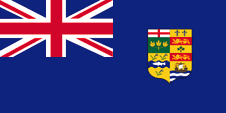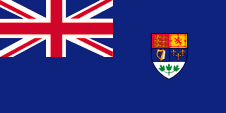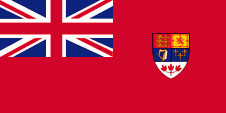mobile View, to the German Version tap the flag


• Flag
• Historical Flags
• Meaning/Origin of the Flag
• Coat of Arms
• Meaning/Origin of the Coat of Arms
• Map
• Numbers and Facts
• History
• Origin of the Country's Name

Flag of the Province of Ontario,
ratio = 1:2,
Source:
wikimedia.org







1870–1922,
State flag,
ratio = 1:2,
Source, by:
World Statesmen




1892–1922,
Civil flag,
ratio = 1:2,
Source, by:
World Statesmen




1922–1957,
State flag,
ratio = 1:2,
Source, by:
World Statesmen




1922–1957,
Civil flag,
ratio = 1:2,
Source, by:
World Statesmen




1957–1965,
State flag,
ratio = 1:2,
Source, by:
World Statesmen




1957–1965,
Civil flag,
ratio = 1:2,
Source, by:
World Statesmen




The today's flag of Ontario was adoped on 21st of May in 1965. It is still orientated in the British Ensign System. This and the use of the Union Jack point at the connections to United Kingdom. United Kingdom introduced a flag system in 1864 in which:
• war ships fly the "White Ensign" (naval flag), a white flag often with an uninterrupted red St. George's-Cross and with the Union Jack in the upper staff quadrant of the flag,
• merchant ships fly a "Red Ensign" (also named "Civil Ensign" → civil flag, the real merchant flag), a red flag with the Union Jack in the upper staff quadrant of the flag, and
• governmental ships fly the "Blue Ensign" (flag for the use by the gouvernment → the actual state flag), a blue flag with the Union Jack in the upper staff quadrant of the flag.
Since 1865 ships of colonial governments were permitted to fly the Blue Ensign with a badge in the flying end of the flag. The respective governments were asked to design appropriate badges. Merchant ships and seafaring persons from colonies were only permitted to use the Red Ensign with a badge, then also named Civil Ensign, if permission has been given to the respective colony by the British admiralty. Such a badge was often a regional landscape representation placed on a disk, often showing ships, historical events or even a kind of a logo. Very often, a badge also showed the name of the country or a motto. Some British possessions, however, already had a coat of arms from the beginning, or their badge was replaced by a coat of arms over the years. To ensure a uniform appearance in the flying end of the flags, coats of arms and other symbols were displayed on a white disk in the size of the earlier badges. There were also exceptions, because some colonies did not use the white disk and placed their escutcheon or even coat of arms directly on the bunting, sometimes enlarged. Already in the '40s they started to remove the white disk and placed the coat of arms directly or enlarged. This conversion process was done gradually, nowhere at the same time and completely. In some British possessions, flags with the white disc are still in use, in others no more and in some areas are both variants in use, next to each other. Ontario (the former Upper Canada), unlike the other provinces of Canada, had no flag of its own. This may have been due to the fact that Ontario was created by the division of the former French Quebéc in Upper and Lower Canada and can be considered a "motherland". Private individuals used the Canadian Red Ensign, the red version of the Canadian flag with the Union Jack in the top and the coat of arms of Canada in the flying end. Authorities accordingly used the Canadian blue official flag, the typical British Blue Ensign, with the coat of arms of Canada in the flying end. In the course of Canada's gradual separation from United Kingdom, the new maple leaf flag was introduced for Canada in 1965 and the Blue and Red Ensigns – belonging to the British flag system – were abolished as national symbols. This trend was also adopted by some provinces and territories, where new flags were also introduced. In some provinces and territories this process had started earlier. However, not in Ontario and not in Manitoba. Here, people did not agree with the abolition of the British symbolism on the flags. Both provinces created their own Red Ensigns: Ontario in 1965, Manitoba in 1966. This type of flag did not exist there before, because the Canadian Red Ensign was used as the civil flag in these provinces. Only Manitoba had its own Blue Ensign, which was used by government agencies and departments. A Red Ensign is normally a type of flag that may be used by all citizens (actually only at sea), but the Red Ensigns of Ontario and Manitoba (differing from the Ensign system) are also used as provincial flags by authorities and departments. The flags of these provinces follow in this way British specifications due to history. They are: Blue = Pantone 280, Red = Pantone 186, Yellow = Pantone 116, Green = Pantone 364.
Source:
Volker Preuß,
Die Welt der Flaggen, Flaggen Enzyklopädie,
World Statesmen,
Wikipedia (EN)


Escutcheon of Ontario,
Source, by:
wikimedia.org

There is a regular coat of arms for Ontario, with a console, shield holders (supporters), withe a crest and the motto. Here is only depicted the central part of the coat of arms, the escutcheon. The escutcheon of Ontario shows in the upper part the English Cross of St. George beneath three golden maple leafs (very old landmark of Canada) on green ground. It was initially created as blazon for the English speaking Upper Canada.
Source:
Volker Preuß


Map:
Volker Preuß

Area: 415.597 square miles
Inhabitants: 14.659.616 (2019), thereof 29,7 % Canadian, 24,0 % Anglo-Canadian, 16,3 % Scottish descent, 15,6 % Irish descent, 10,9 % Franco Canadian, 8,6 % German descent, 6,9 % Italian descent, 4,6 % Chinese descent, 2,7 % Native American (Indians)
Density of Population: 35 inh./sq.mi.
Capital: Toronto, 2.731.571 inh. (2016)
official Language: English
other Languages: French
Currency: Canadian currency
Time Zone: GMT – 5 h bis – 6 h
Source:
Wikipedia (D)

1675 · establishment of a first European housing estate
1679–1682 · the Frenchman La Salle explores the Great Lakes and the river Mississippi
17th–18th cent. · French colonization of the region around the Great Lakes and along the river Mississippi (Louisiana), the region northern of the Great Lakes is named Canada
1763 · Peace of Paris, France has to cede all its north american possessions to United Kingdom (British Northern America), except St. Pierre and Miquelon, Quebec is declared a British province
1775–1776 · defence of diverse attacks by anti-British rebels from New England
1783 · immigration of 35 000 loyal US-Americans
1791 · partition of the Province of Québec along the Ottawa River into the English speaking Upper Canada (the later Ontario) and the French speaking Lower Canada (the today's Québec)
1812–1814 · repulse of diverse attacks of USA troops
1840 · union of the provinces of Nova Scotia, New Brunswick, Québec and Upper Canada in one colony (Canada) with an own constitution
1867 · rename of Upper Canada into Ontario, establishment of the Confederation of Canada (Dominion of Canada – with an own parliament) because of demands for autonomy, confederation by the four founding provinces New Brunswick, Québec, Ontario and Nova Scotia
1882 · enlargement of the Province of Ontario in the northwest by annexation of parts of Western Rupertsland
1912 · enlargement of the Province of Ontario by annexation of the leftovers of Western Rupertsland
Source:
Atlas zur Geschichte,
World Statesmen,
Wikipedia (D),
Discovery '97

The name of the province goes back to the Ontario Lake. The Huron Indians called it ontari:io, which is to translate as "great lake".
Source:
Wikipedia (EN)


![]()






















